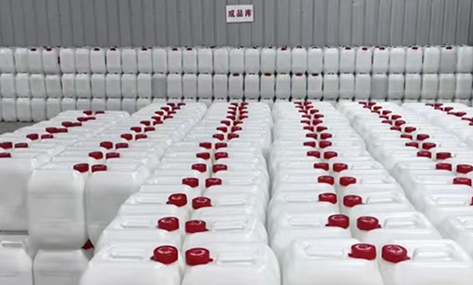
Dec . 05, 2024 12:22 Back to list
Storage Guidelines for Glacial Acetic Acid in Laboratory Settings
Storage Requirements for Glacial Acetic Acid
Glacial acetic acid, also known as ethanoic acid, is a clear, colorless liquid with a pungent odor. It is a vital chemical used in numerous industrial applications, including the production of synthetic fibers, plastics, and food additives. Due to its corrosive nature and potential hazards, proper storage is essential to ensure safety and maintain its quality. This article delves into the key storage requirements for glacial acetic acid, addressing safety measures, recommended storage conditions, and handling guidelines.
Safety Precautions
When storing glacial acetic acid, safety is the foremost consideration. It is classified as a flammable and corrosive substance. Therefore, it is critical to store it away from sources of ignition, such as open flames, sparks, and high-temperature equipment. The area chosen for storage should be well-ventilated, as the vapors can accumulate and pose inhalation risks. It is also advisable to use explosion-proof equipment in spaces where acetic acid is stored or handled.
Personal protective equipment (PPE) such as gloves, goggles, and acid-resistant clothing should be worn by personnel involved in the handling and storage of glacial acetic acid. Moreover, safety data sheets (SDS) should be readily available for reference, outlining procedures in case of spills, leaks, or exposure.
Storage Conditions
Glacial acetic acid should be stored in a cool, dry place with a stable temperature. The ideal storage temperature is typically between 15°C (59°F) and 25°C (77°F). Exceeding this temperature range can increase the vapor pressure of acetic acid, raising the risk of leaks and accidents. Therefore, it is crucial to ensure that the storage area is equipped with temperature control mechanisms.
The materials used for storage containers must be compatible with glacial acetic acid. Typically, glass, polyethylene, and certain grades of steel are suitable; however, it is advisable to avoid containers made of materials that can corrode, such as aluminum or copper. Containers should be kept tightly sealed to prevent the escape of vapors and minimize contamination.
Segregation from Incompatible Chemicals
glacial acetic acid storage requirements

It is essential to segregate glacial acetic acid from incompatible substances. Strong oxidizers, bases, and reactive metals can pose significant risks if they come into contact with acetic acid. To mitigate this risk, dedicated storage cabinets should be utilized for hazardous materials, ensuring that acetic acid is kept well away from substances like hydrogen peroxide, potassium permanganate, and strong alkalies.
Maintenance and Inspection
Regular inspections of storage areas and containers are vital to ensure the integrity of the storage system. Look out for signs of leakage, corrosion, or structural compromise in the containers. Spill containment systems should be in place, including trays or secondary containment systems designed to capture any potential spills. Adequate training for personnel on the procedures for monitoring and maintaining storage systems is essential to minimize risks.
Emergency Preparedness
In addition to proper storage procedures, organizations should have an emergency response plan in place. This plan should outline the procedures to follow in the event of a spill, leak, or exposure. Emergency shut-off valves, drainage systems, and fire suppression systems should be accessible and clearly marked.
Training personnel on emergency procedures and conducting regular drills is also important to ensure quick and efficient responses to incidents involving glacial acetic acid.
Conclusion
In summary, the safe storage of glacial acetic acid requires stringent adherence to safety procedures, optimal storage conditions, and responsible handling practices. By understanding its properties and potential risks, individuals and organizations can prevent accidents and maintain a safe working environment. With proper training, regular inspections, and robust emergency preparedness, the safe handling of glacial acetic acid can be managed effectively, enabling its continued use in various applications without compromising safety.
-
SmartAgri Solutions - Precision Farming&Soil Monitoring
NewsJul.13,2025
-
Industrial Solutions-Example Inc.|Smart Manufacturing&Energy Efficiency
NewsJul.13,2025
-
Food Grade Glacial Acetic Acid-Pure Quality|High-Purity Acetic Acid,Food-Grade Chemical
NewsJul.13,2025
-
Industrial Efficiency Solutions-NextGen Technologies|Advanced Automation&Data-Driven Analytics
NewsJul.12,2025
-
Smart Manufacturing Solutions-Example.com|Enhance Efficiency&Reduce Costs
NewsJul.12,2025
-
Food grade glacial acetic acid
NewsMar.07,2025
